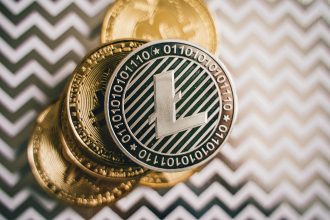nuclear power generation
Nuclear Power Generation: A Comprehensive Guide
The future of energy is a topic of constant debate, with many looking towards cleaner, more sustainable options. Among these, nuclear power generation stands out as a potent, low-carbon source capable of meeting significant energy demands. But what exactly is nuclear power, and how does it work? This guide will delve into the intricacies of nuclear energy, exploring its advantages, challenges, and its role in shaping our energy landscape.
Understanding Nuclear Power Generation
At its core, nuclear power generation harnesses the immense energy released from the nucleus of atoms. This process, known as nuclear fission, involves splitting heavy atomic nuclei, typically uranium, into smaller ones. This splitting releases a tremendous amount of heat, which is then used to produce electricity.
The Fission Process Explained
In a nuclear reactor, a controlled chain reaction of fission events occurs. Neutrons strike uranium atoms, causing them to split and release more neutrons, along with a significant amount of energy in the form of heat. This heat is used to boil water, creating steam. The steam then drives turbines, which are connected to generators that produce electricity.
Key Components of a Nuclear Power Plant
Nuclear power plants are complex facilities designed for safety and efficiency. Key components include:
- Reactor Core: Where nuclear fission takes place.
- Control Rods: Used to regulate the rate of the nuclear reaction by absorbing neutrons.
- Moderator: Slows down fast neutrons to increase the probability of further fission.
- Coolant: Carries heat away from the reactor core to generate steam.
- Steam Turbines: Driven by steam to generate mechanical energy.
- Generators: Convert mechanical energy into electrical energy.
- Containment Building: A robust structure designed to prevent the release of radioactive materials.
Advantages of Nuclear Power Generation
Nuclear energy offers several compelling benefits that make it an attractive option for many nations seeking to decarbonize their energy sectors.
Low Carbon Emissions
One of the most significant advantages of nuclear power is its virtually zero greenhouse gas emissions during operation. This makes it a crucial tool in combating climate change and achieving net-zero targets, unlike fossil fuel power plants that release substantial amounts of CO2.
High Power Output and Reliability
Nuclear power plants can generate a massive amount of electricity from a single facility, providing a consistent and reliable baseload power source. Unlike intermittent renewable sources like solar and wind, nuclear power plants can operate 24/7, ensuring a stable supply of electricity regardless of weather conditions.
Land Use Efficiency
Compared to other forms of renewable energy generation, such as large-scale solar farms or wind parks, nuclear power plants require significantly less land area to produce the same amount of energy. This can be particularly advantageous in densely populated regions or areas with limited available land.
Challenges and Considerations
Despite its advantages, nuclear power generation also faces considerable challenges and public scrutiny.
Nuclear Waste Management
The disposal of radioactive waste generated by nuclear reactors is a complex and long-term challenge. Safe storage and eventual disposal of spent nuclear fuel require specialized facilities and rigorous safety protocols to prevent environmental contamination.
Safety Concerns and Public Perception
Accidents at nuclear power plants, though rare, can have severe consequences. Public perception of nuclear safety, influenced by historical events, remains a significant hurdle. Continuous advancements in reactor design and stringent safety regulations aim to mitigate these risks.
High Initial Costs
Building a nuclear power plant involves substantial upfront capital investment. The long construction times and complex regulatory processes can also contribute to high project costs, making financing a significant consideration.
The Role of Nuclear Energy in the Future
As the world grapples with the urgent need for clean energy solutions, nuclear power generation is poised to play a vital role. Its ability to provide reliable, low-carbon electricity makes it an essential component of a diversified energy portfolio. Advancements in reactor technology, such as Small Modular Reactors (SMRs), promise to offer more flexible, cost-effective, and potentially safer nuclear energy solutions for the future.
The ongoing development and deployment of nuclear energy, alongside other clean energy sources, will be critical in achieving global climate goals and ensuring energy security for generations to come. The integration of nuclear power, alongside established systems like hydroelectric power, represents a multifaceted approach to meeting our growing energy needs sustainably.
For more information on energy technologies, explore resources from the International Atomic Energy Agency and the U.S. Department of Energy.
Conclusion
Nuclear power generation offers a powerful, low-carbon solution for meeting global energy demands. While challenges related to waste management, safety, and cost persist, ongoing technological advancements and rigorous safety standards are continuously addressing these concerns. As nations strive for a cleaner energy future, nuclear energy remains a critical piece of the puzzle, complementing other renewable sources to ensure a stable and sustainable power supply.
Discover more about the evolving landscape of energy production and how to leverage these advancements for your projects.
© 2025 thebossmind.com






